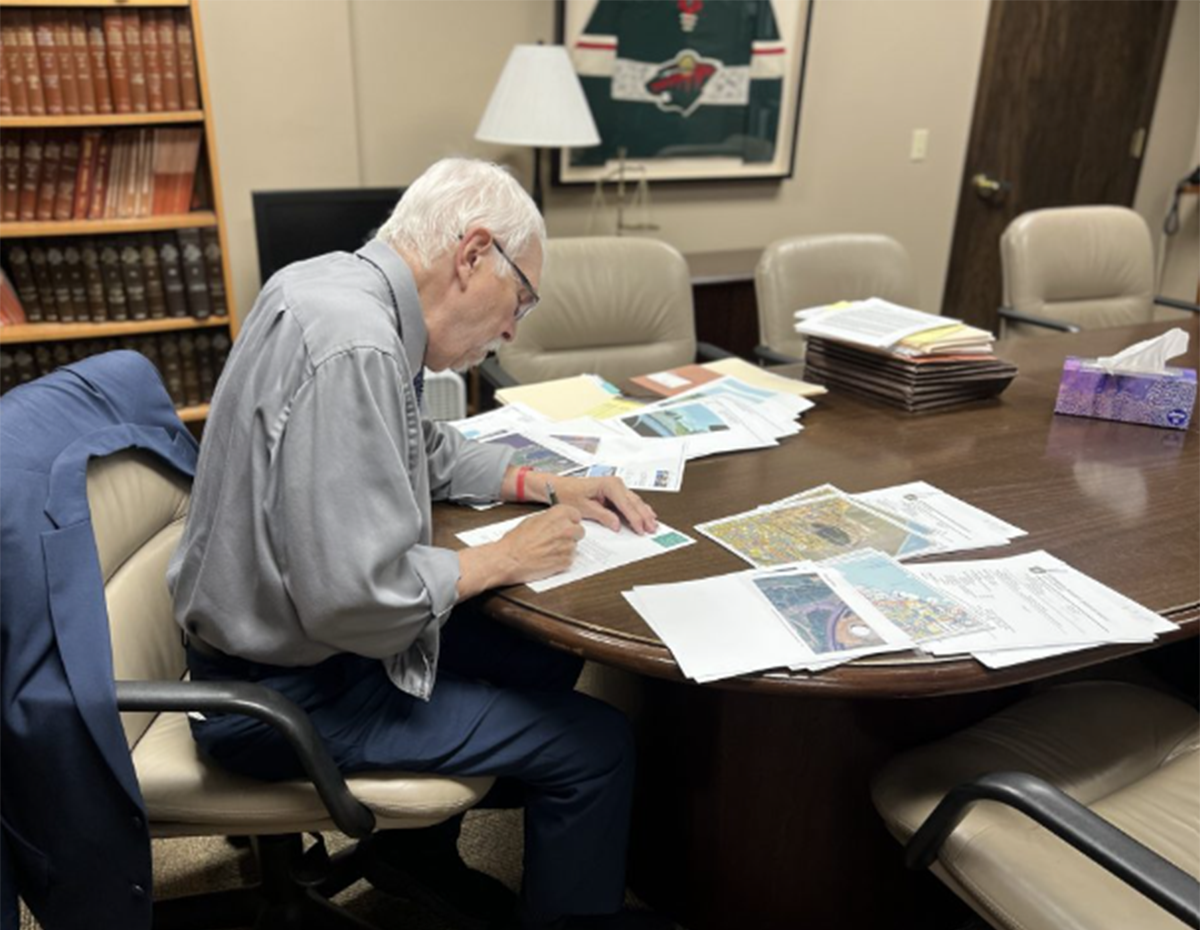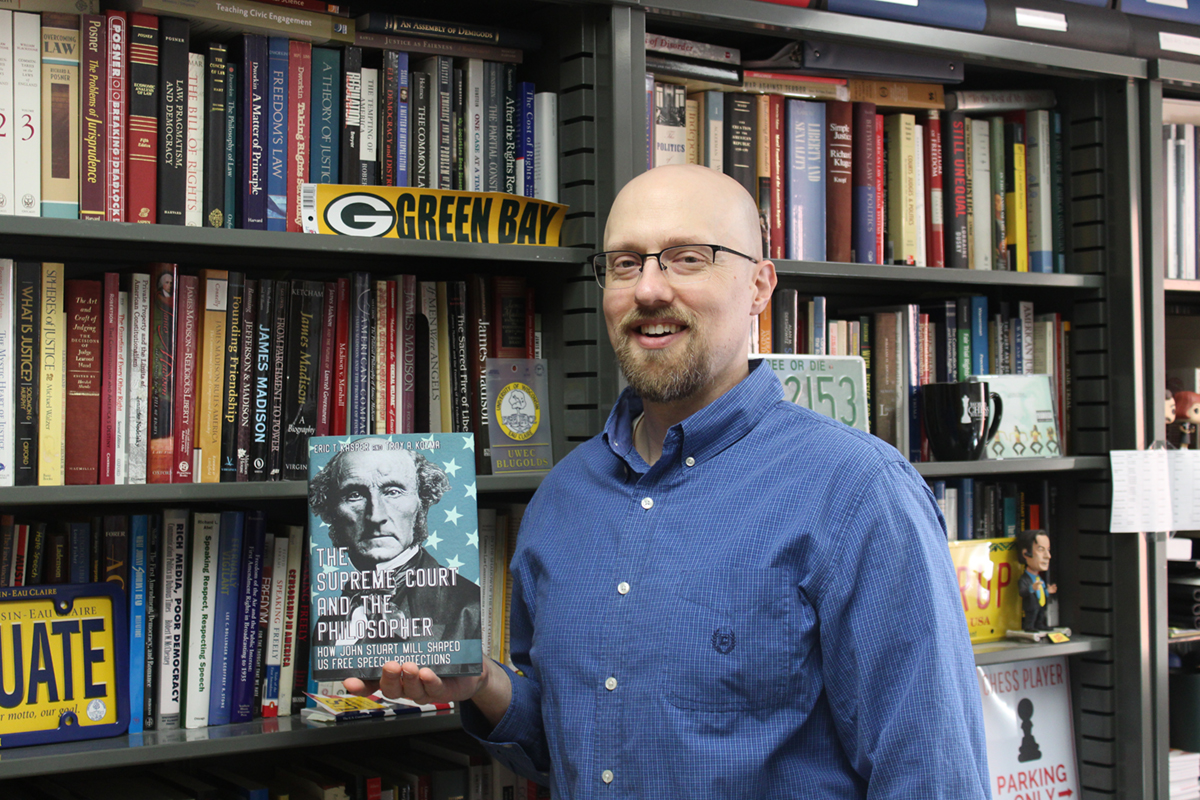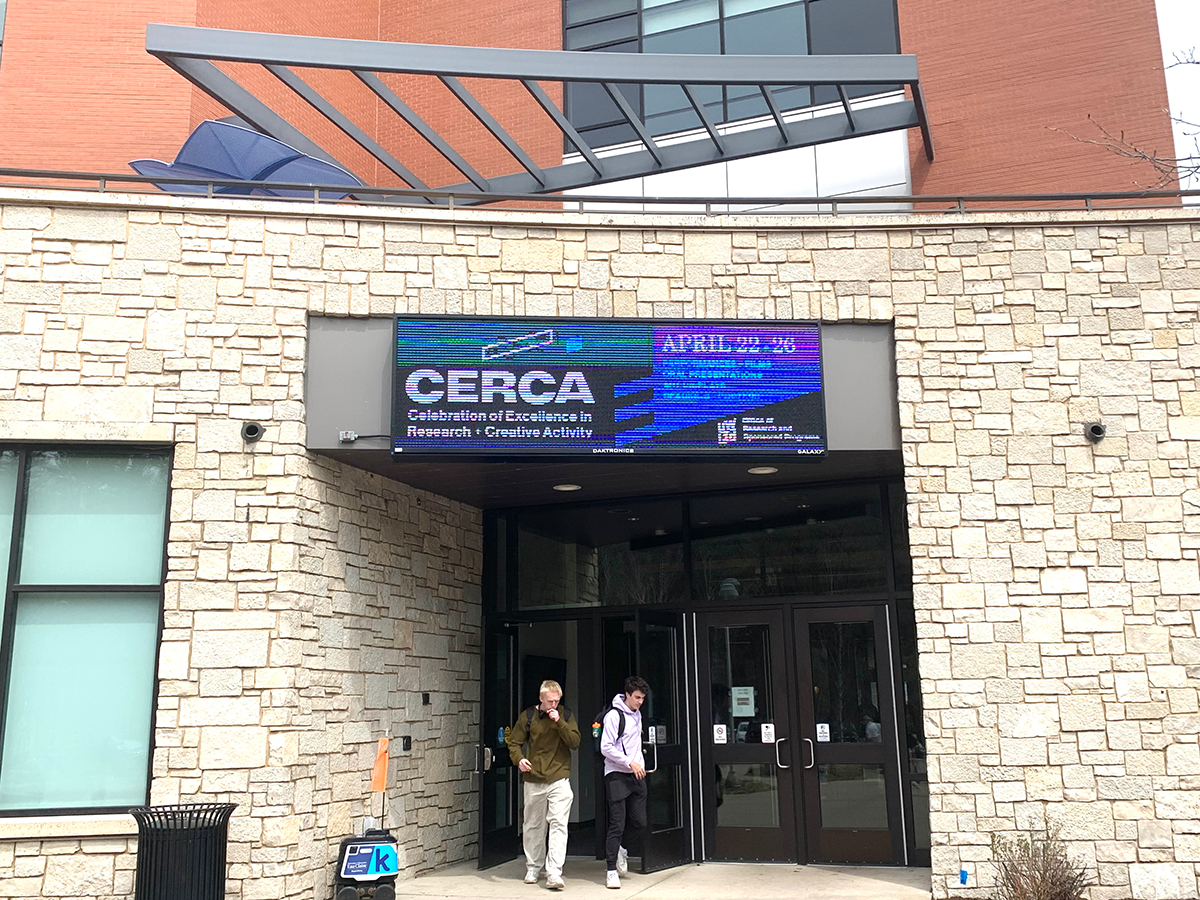Plans for a $950,000 redevelopment project on campus for the south side bank of the Chippewa River were presented to the University Senate on March 27 by Vice Chancellor Andy Soll, raising some faculty concerns.
The state-funded bank stabilization project, paid for by the Division of Facilities Development and the State Building Commission, addresses the school’s concern for the gradual erosion of the south side bank, Soll said.
He said he thinks the situation is one the university cannot afford to let go until there is catastrophic damage done to the school’s “main artery” road – Garfield Avenue – and the utilities in the area’s ground.
The area planned for redevelopment, which is about 1,200 feet in length, starts about 100 feet before the foot bridge, goes along Garfield Avenue and ends by the Putnam parking lot, said Chris Goodwin of Ayres Associates, an Eau Claire engineering firm hired for the project.
Goodwin said the project, as of now, is scheduled to begin after commencement in late May and would end by late August. Soll said about 130 trees, various native grasses and more than 300 shrubs will be planted after the project’s completion, which also will include a new sidewalk and observation deck.
Although Soll said, as he also told University Senate, the Department of Natural Resources has approved the project, the DNR actually has yet to officially approve a permit. But a DNR official said he expects the permit to be approved fairly soon. The project also is waiting for the U.S. Army Corps of Engineers’ approval.
Goodwin said a river bank slope structured by rip-rap, or chunks of limestone rocks, will be built extending 32 feet out into the Chippewa River.
Geography professor Sean Hartnett, who has mapped the Chippewa River for the past 10 years and does not think the eroding bank is an emergency situation, said he is suspect of the project’s design. He said he believes the structure created by it would have the single largest impact on the river other than the dams built on it.
“Rivers are terribly hard to predict,” said Hartnett, adding he can only speculate on the project from viewing its preliminary designs.
He said he has been asking for more information on the project but the university hasn’t provided him with any.
Soll said the project’s plans recently were sent to the geography and biology departments, possibly at a later stage than they should have been.
Dan Koyich, water regulation and zoning specialist for the DNR, said the research done with Ayres Associates shows the bank’s design will have no effect on the river’s environment.
“It is a `no-change’ situation,” said Koyich, adding that university officials started talking to the DNR and the project’s designers last fall. Koyich said nobody can predict the project’s outcome, but the people involved with it now think there’s no problem with it so far.
Goodwin said research done by Ayres and the DNR found the bank addition would not raise the normal flood elevation more than 1/100th of a foot, which is a DNR guideline the project has to meet.
Hartnett said there are about four or five different options to the project, including the construction of a flood wall that could “respect the integrity” of the river’s channel. Hartnett said the administration’s mode of operation for the project probably is his chief concern.
“The way it has come on so quickly, that’s what I find so troubling,” Hartnett said.
Hartnett, who said he probably has the best data on the Chippewa River available, said the administration has disregarded his research and the expertise of about 15 faculty members. He said it shows the administration’s lack of confidence in the faculty.
University Senate Chair Susan Harrison said the most common comment she heard from senators after the project’s announcement was that it would’ve been nice to have known about it earlier.
Soll stressed it is the DFD’s project and not the university’s. Soll said in retrospect, the situation could have been handled differently, but there are many projects done on the campus during the year.
“It’s very difficult to anticipate who might have a concern,” said Soll, adding that he thinks the project has been handled responsibly even though there were student learning opportunities that could have been taken better advantage of.
Koyich said he thinks there should have been some communication with the people in university’s science department, and that they should have known about the project when it started.
Soll said he hopes, although the project’s design is done, to find ways to involve faculty and students in the project from now on.






